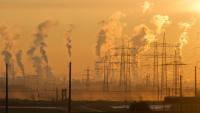Long-term air pollution exposure and emphysema

Although air pollution has been associated with incident cardiovascular and respiratory diseases, its effect on the progression of emphysema is largely unknown. This study shows that long-term exposure to ambient air pollutants is significantly associated with increasing emphysema.
Emphysema is a gradual damage of lung tissue due to thinning and destruction of air sacs (alveoli) in the lungs and can be related to COPD (chronic obstructive pulmonary disease). As a result, the body does not get enough of the oxygen it needs, making it hard to catch one’s breath. Since chronic lower respiratory disease is the fourth leading cause of death in the United States and third leading cause of death worldwide, with much of the mortality due to COPD and pulmonary emphysema, new research in this field is relevant and applicable to the field of public health.
Since ambient air pollution is a major risk factor for poor health worldwide, especially in relation to respiratory morbidity and mortality, this cohort study aimed to find an association between long-term exposure to ambient air pollutants, specifically ambient ozone (O3), fine particulate matter (PM2.5), oxides of nitrogen (NOx), and black carbon, to greater increases of emphysema assessed quantitatively using computed tomographic (CT) imaging.
The study used data from the Multi-Ethnic Study of Atherosclerosis (MESA), which recruited participants aged 45 to 84 years without clinical cardiovascular disease from 2000 to 2002 in six US metropolitan areas [Chicago, IL; Winston-Salem, NC; Baltimore, MD; Los Angeles, CA; St. Paul, MN; New York, NY]. To achieve a more representative and diverse population and meet prespecified recruitment goals by clinical site, the MESA study included four race/ethnic categories: White, African American, Hispanic, and Chinese American.
Percent emphysema was calculated based on all usable CT scans, including cardiac and full-lung scans, and all MESA participants underwent a cardiac CT scan at baseline from 2000 to 2002. Percent emphysema was defined as the percentage of lung pixels below ~950 Hounsfield units (HU), a threshold selected based on pathologic comparisons and prognostic significance in the cohort.
To assess the longitudinal relationship between long-term exposure to air pollution and progression of percent emphysema and decline in lung function over time, covariates and effect modifiers in the study were adjusted and accounted for. These included baseline age, sex, race/ethnicity, study region, education, BMI, smoking status, SES level, income, employment, physical activity, and long-term mean city-specific temperature, just to name a few.
Overall, the study found that higher residential concentrations of O3, PM2.5, and NOx at study baseline, of black carbon averaged from 2006 to 2008, and of O3 and NOx assessed over study follow-up, were significantly associated with greater increases in percent emphysema, assessed via CT imaging, over a median of 10 years. This study demonstrates evidence from a community-based population study that air pollution contributes to worsening lung health and is the first longitudinal study to assess the association between long-term exposure to air pollutants and progression of percent emphysema on CT in a large, community-based multiethnic cohort. In addition, it reveals that despite existing regulations to prevent short-term deviations of O3 levels, long-term average concentrations of O3 did not decline during the years of observation. This contrasts with the downward trends in PM2.5 and NOx, which highlights the success of past regulatory initiatives to control these two pollutants. From these findings, more effective control strategies are needed to reduce O3 concentrations to protect lung health in community members.
Wang M, Aaron CP, Madrigano J, Hoffman EA, Angelini E, Yang J, Laine A, Vetterli TM, Kinney PL, Sampson PD, Sheppard LE, Szpiro AA, Adar SD, Kirwa K, Smith B, Lederer DJ, Diez-Roux AV, Vedal S, Kaufman JD, Barr, RG. Association Between Long-term Exposure to Ambient Air Pollution and Change in Quantitatively Assessed Emphysema and Lung Function. JAMA. 2019;322(6):546–556. doi:https://doi.org/10.1001/jama.2019.10255